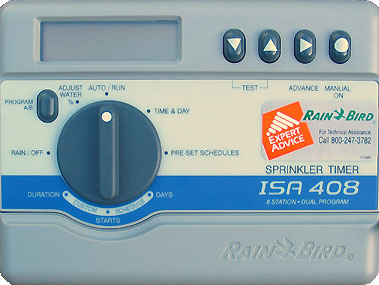 |
||||||||||
| ||||||||||
| |||||||||||||||||||||||
AskTog, August, 2003
A D'ohLT is a person who screws up some product or service so badly that, when you attempt to use it, you end up slapping your head and yelling that famous homersimpsonian cry, "D'oh!"
D'ohLT rhymes with "jolt," and is, of course, not to be confused with any similar sounding, but possibly actionable word.
Over the next few months, I'm going to be talking about some real D'ohLTs. Some of these people, like the ones I'll be talking about today, have screwed up once that I know of, but they did it spectacularly. Others have screwed up repeatedly.
One entire occupation, of whom I'll be talking in September, is heavily populated by D'ohLTs--bright people, but D'ohLTs nonetheless.
Our automatic sprinkler system timer, a Rain Bird became a dead Bird after almost 365 days of faithful service. It was time to buy a new one.
The old one had been a decent design, notwithstanding its sharp lack of longevity, with one potential flaw: instead of using flash memory, it depended on a 9-volt battery to keep everything alive during power outages.
This limitation was unpleasant, but acceptable. The battery was good for 24 hours of power failure, and we had never been blacked out more than ten or fifteen hours total during a winter season. We already had to change a number of other batteries once per year; we figured we'd just add this to the schedule. As it turned out, we had to change the entire timer once a year anyway. No big deal.
|
|
The new, improved Rain Bird was pretty neat, with an improved, clean, ergonomic design and programming procedure.

We were really, really happy, until we got to page 5 of the owner's manual (emphasis mine):
Install Battery
During a power outage, the battery preserves your programmed watering schedules. A newly installed battery will hold information for up to six hours if the power goes out.
D'oh!
Its not like Rain Bird didn't notice their bird brains were going to flat-line a lot. The manual went on to caution:
If power outages occur frequently, you may need to change the battery more often [than once a year.]
Fortunately, they provide a handy indicator of when the battery has died: all your carefully-entered programming for eight different systems, each with its own days and times, disappears.
D'oh!
How did the engineers manage, rather than reducing the power requirement, to multiply it by 400%?
More importantly, where exactly were the interaction designers when the lights went out?
Interaction architecture starts at the bottom. All the fancy surface design in the world will not make up for a failure in the fundamentals. Clearly the engineers screwed up their design, and badly, but it happened on the interaction architect's watch.
If I had been he, there would have been tire tracks on me where the trucks had had to drive over me to deliver such a poorly-executed product.
(I will be happy to show you several sets of tire tracks I've accumulated over the years.)
Interaction Architects, listen up! It is your responsibility to ensure every aspect of the user experience is a quality one. You need to be at every meeting in which decisions are being made that will effect the user.
The finest programming design for a garden timer will not make up for the user having to repeat that programming process 20 or 30 times over the expected life of the product.
The finest programming experience will not make up for someone returning home from vacation to find all their drip-irrigated plants are dead and dying, because instead of getting two hours a day of drip, the machine defaulted to 10 minutes a day.
Thing early and think vertical. Be part of the process from the very beginning, and don't let anyone tell you your job is limited to manipulating pixels and deciding on the location of knobs.
I returned the Rain Bird and bought a Water Champ. It has flash memory, so goes a minimum of seven years on a single, small lithium battery, there strictly to power the clock chip. The Water Champ costs a little more, but far less than all those extra batteries for the Rain Bird, to say nothing of the therapy costs you'll incur the 13th time the Rain Bird loses all your programming and you lose all your programming as well.
I kept the Rain Bird valves, however, and they worked fine, except, of course, for the one that didn't. I called the 800 number they brag about on their packaging (see bright orange sticker in the photo, above), and the guy I talked to had no idea what I was talking about. He had never seen or heard of the particular Rain Bird valve I'd just bought--one of only two basic types they make.
D'oh!
Apparently, Rain Bird hasn't read my article on Call Centers, either.
Sunbeam make an automatic tea machine with radio and clock. You can set the time you want to wake up and the radio or buzzer will go off while the tea maker boils to life and makes the cup of tea.
Brilliant except for one problem: If there is the briefest power outage during the night the clock goes on flash mode, you will be late for work and not have had your tea! Why? There is no backup battery as with just about all electronic alarm clocks.
I bet the engineers who put this together:
Cheers, Hans.
Have a comment about this article? Send a message to Tog.
Previous AskTog Columns >
|
Don't miss the next action-packed column! Receive a brief notice when new columns are posted by sending a blank email to asktoglist-subscribe@yahoogroups.com. |
| Contact Us: Bruce Tognazzini Copyright Bruce Tognazzini. All Rights Reserved |